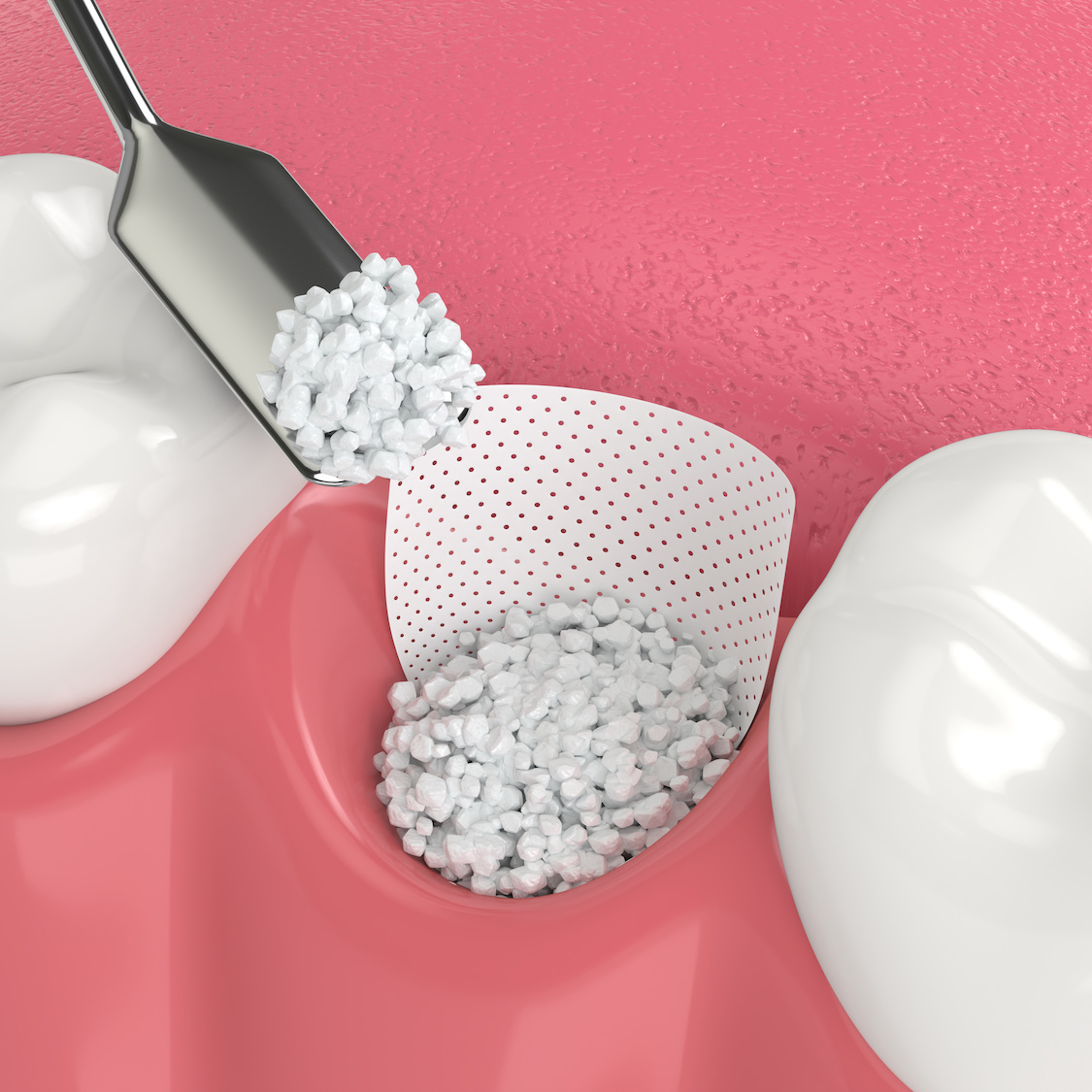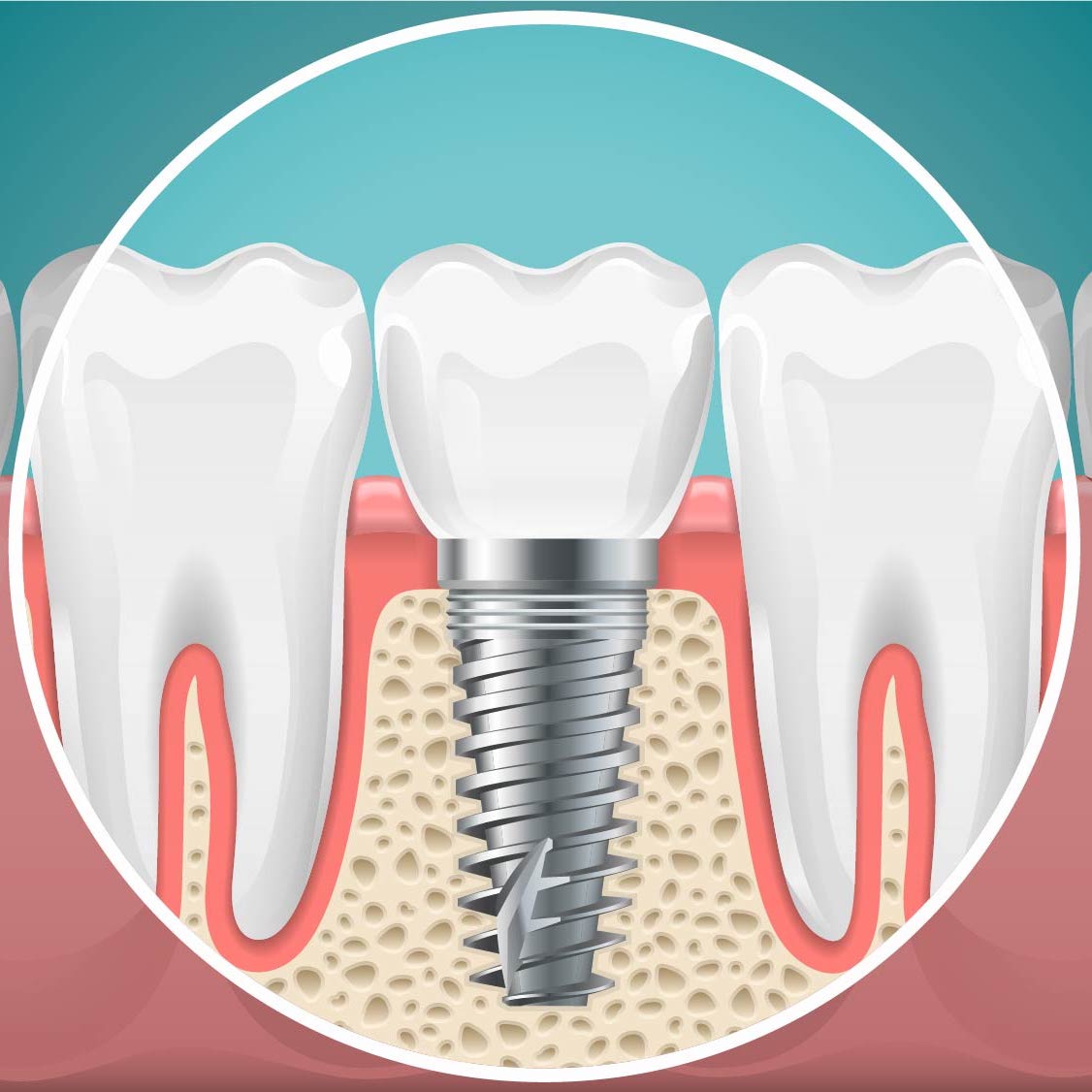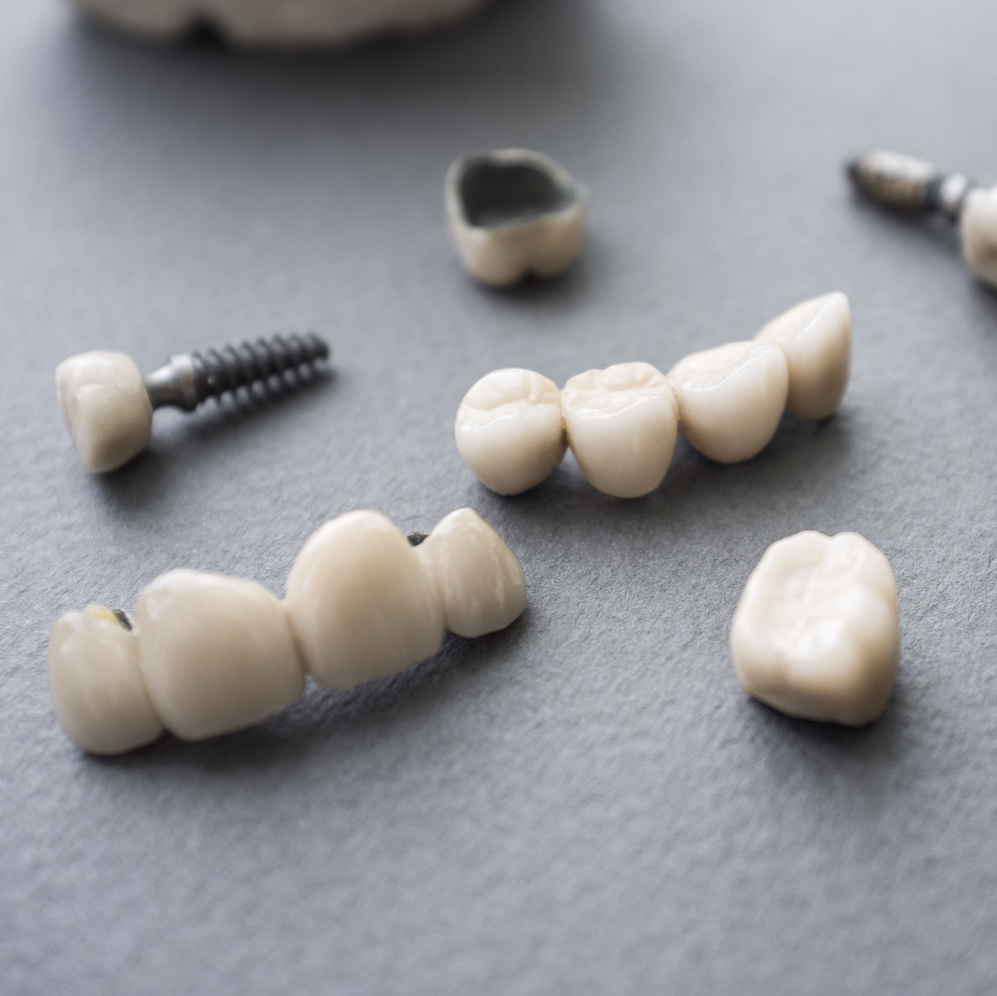Dental Procedure
Dental Implants
Dental Implants
Despite vast improvements in dental care, millions of people in the US suffer tooth loss mostly due to periodontal disease, tooth decay, and / or injury. For years, the only treatment options available for people with missing teeth were dentures and bridges. Today, however, dental implants are now readily available.
Dental implants provide both aesthetic value and functionality to the appearance of a smile. Compared to once popular dentures and bridges,dental implants allow you to eat and smile with no hesitation and without the worry of dentures slipping or chewing in areas with teeth missing.
Dr. Francisco can help you in achieving a beautiful smile that is also functional. You reveal your smile every single day, why not have one that makes you proud and allows for easier eating and speaking?
What Are Dental Implants?
Dental implant surgery is a procedure that replaces tooth roots with titanium, screw-like posts that are inserted into the patient’s jawbone. The titanium post will act as a root for the tooth while an abutment will later be placed on top of the implant followed by the placement of the prosthetic crown that will resemble the patient’s original tooth. The crown will be composed of either porcelain or ceramic and will be color-matched to your teeth. Given that the titanium metal in the implants fuses with your jawbone through a process called osseo-integration, the implants will not slip or cause bone damage in the same manner dentures or fixed bridgework can. And the materials will not decay and / or erode like your own teeth that support regular bridgework. What does that mean? When you show off your new smile, it’s hardly visible that you have implants.
In General, Dental Implants May be Right for You, If:
- Have a fully grown jawbone.
- Have one or multiple missing teeth.
- Have adequate bone structure that will secure the implants or are able to accommodate a bone graft.
- Have healthy gum tissues.
- Do not have any health issues / conditions that will affect bone healing.
- Cannot or prefer not to wear dentures.
- Desire to improve your speech.
- Can and are willing to commit several months to the process.
- Do not smoke or use smokeless tobacco products.
Types of Dental Implants
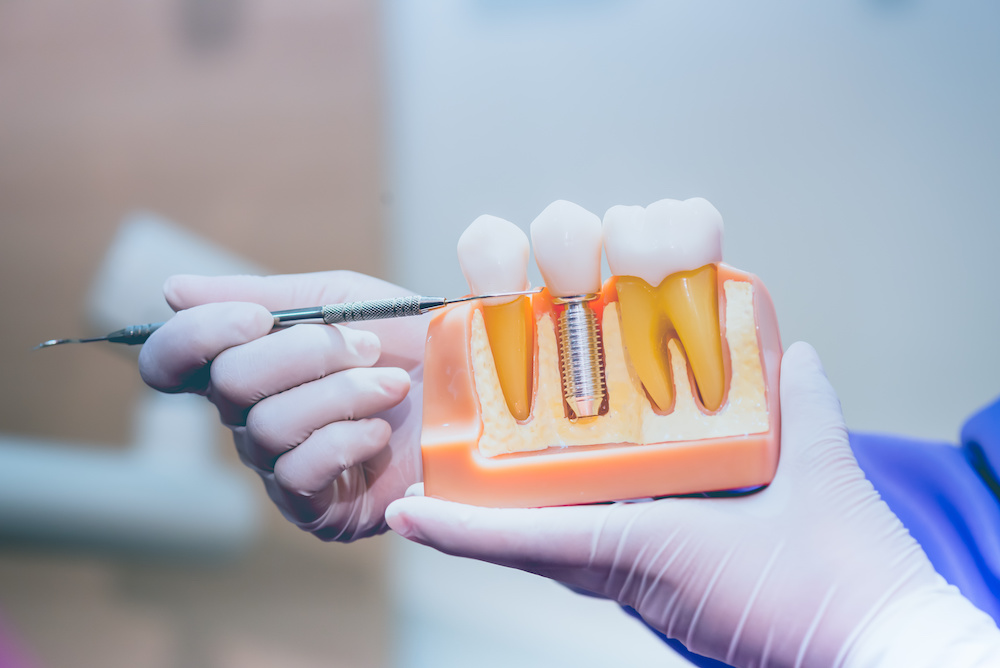
Single
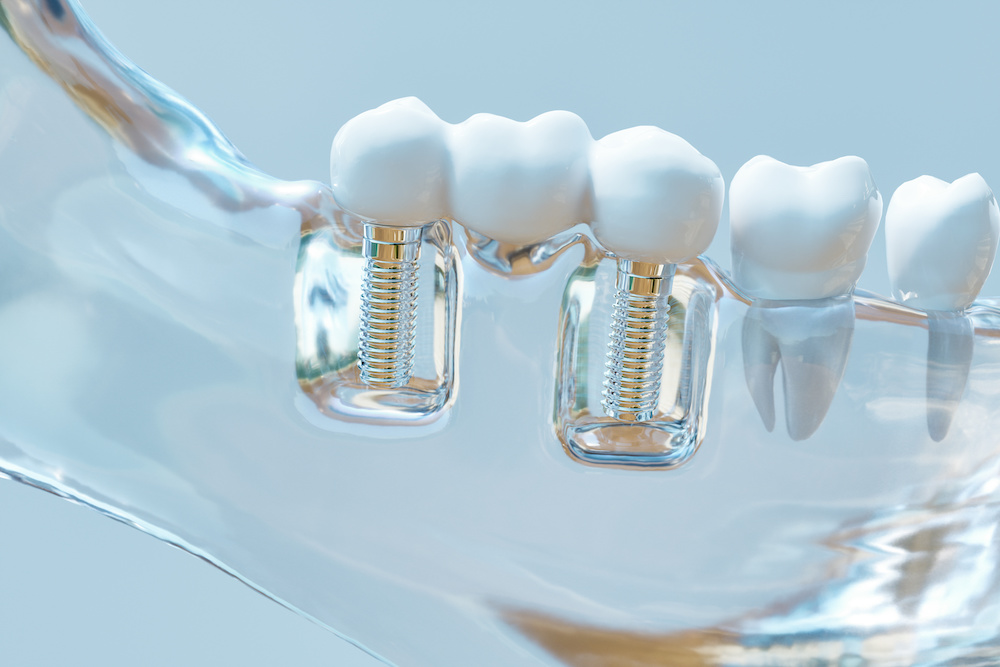
Multi
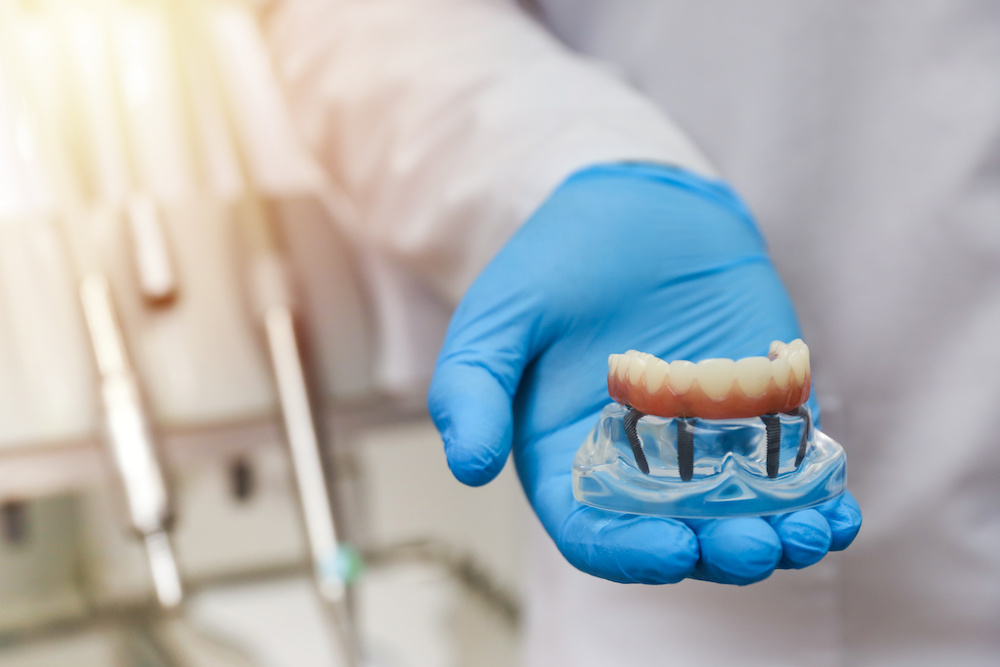
All-On-4
Benefits of Dental Implants
When a tooth is removed or lost, the patient will lose approximately 25% of bone density in the tooth loss region in the first year. This bone density loss is a serious issue that can result in the loss of facial structure definition. It can also impact a person’s ability to chew, talk and maintain adequate nourishment levels from food. In the jaw region where tooth loss or removal has occurred, replacement of the missing teeth should be done for the patient’s oral health, overall well being as-well-as cosmetic purposes.
These Benefits Include:
- Improves your self-esteem by upgrading your appearance through your smile.
- Makes it more comfortable to have conversations.
- Improves oral health and overall well-being.
- Looks like your real teeth.
- Can prevent bone loss along the jaw ridgeline.
- Helps create a beautiful smile by replacing lost / removed teeth and gaps.
- Eliminates bridges that are proven to deteriorate teeth and gums over time.
- Helps improve nutritional intake by increasing comfort while eating.
- Eliminates the use of adhesives for dentures.
- No unattractive metal clasps like those used for dental partials.
- Will potentially last a lifetime with the proper care, maintenance and attention.
What to Expect During Dental Implant Surgery
There are multiple procedure steps involved in dental implant surgery that allow for healing between procedures. Those steps can include:
- Removal of any damaged teeth if needed
- If necessary, jawbone grafting
- If grafting is done, bone graft growth into the existing jawbone and healing
- Placement of the dental implant into the jawbone
- Fusion (osseo-integration) of the implant with the jawbone and healing
- Abutment placement
- Artificial tooth placement
The dental implantation process can require several months from beginning to end. Most of that time is used for jawbone growth and healing. There are times, based on individual cases, that some of the procedures can be combined.
Jawbone Grafting
There are cases where your jawbone is too soft or not thick enough. If that is the case, it is probable the jawbone will not be able to provide solid anchoring material for the implant. Chewing exerts a tremendous amount of pressure on your bone which can result in failure if the bone can’t support the implant. This can simply be overcome by having bone grafting prior to your dental implant surgery. A bone graft can create a more solid base for the implant.
There are many bone graft materials that can be utilized to rebuild the jawbone. These include:
Autograft Bone Graft
The bone used for this graft will be removed from another area of the patient such as the chin, hard palette, hip and / or shin. This approach reduces the risk of the rejection given the graft has been taken from the patient’s body. This does, however, require an incision and bone removal from another area of the body which does have its own risks of pain and / or possible infection at the harvest site.
Allograft Bone Graft
Allograft bone grafts are acquired from deceased donors. This bone material is verified to be disease and infection free prior to being harvested from the donor. The primary concern with this type of bone graft is the risk of an immune reaction or rejection at any point after the grafting procedure.
Xenograft Bone Graft
These types of bone grafts are sourced from animals, typically cows and / or pigs. This bone material is processed so that the remaining material used for the graft is made up of mineral components. As with Allografts, a main benefit of xenografts is that there is no harvesting donor material from the patient.
Alloplast Bone Graft
This graft is either human-made or created from natural sources such as minerals. A main benefit of alloplast is the lack of risk for disease or infection from the graft material. There is, however, the risk of an immune reaction and / or rejection.
It may take several months for the transplanted bone to grow enough new bone to support a dental implant. In some cases, you may need only minor bone grafting, which can be done at the same time as the implant surgery. The condition of your jawbone determines how you proceed.
Placement of the Dental Implant
Dr. Francisco will make an incision to open your gum and expose the underlying bone. He will then drill holes into your jawbone where the titanium dental implant post will be placed. The post will be implanted deep into the bone as it will serve as your new tooth’s root.
You will have a gap between your existing teeth where the post has been placed. If desired and / or needed, a temporary partial denture can be placed in the gap for appearance. You will be able to easily remove the denture for cleaning and before sleep.
Waiting for Bone Growth
Over the next several months, the jawbone will grow into and unite with the titanium implant through a process called osseointegration. This will allow the implant and bone to become a solid integrated base for your new artificial tooth.
Placing the Abutment
Once the implant post and bone have sufficiently fused, an additional procedure might be required to place the abutment into the post. The abutment is the component of the crown (artificial tooth) that will be attached. If required, this is a minor procedure requiring only local anesthesia and is done in an outpatient setting.
Placing the abutment:
- Dr. Francisco will reopen your gum and expose the titanium implant.
- The abutment is then attached to the implant post.
- The gum tissue is then closed around the abutment.
There are cases when the abutment will be attached to the dental implant titanium post when that post is implanted. That will allow the stand alone placing of the abutment procedure to be skipped. If the post and abutment are placed at the same time, however, the result will be that the abutment visibly juts out past the gum line until the crown is placed later. Some patients are not comfortable with the abutment being visible for the several months required for the implant post and bone to fuse and choose to have it placed in a later procedure.
After placing the abutment, your gums will need to heal for at least two weeks prior to the crown being attached to the abutment.
Choosing Your New Artificial Teeth
Depending on if you are getting single, multiple, All-On-4 or All-On-6 implants, you will select between artificial teeth that are fixed, removable or a combination of the two.
- Fixed: An artificial tooth (crown) is permanently attached onto an individual abutment. This tooth can’t be removed during sleep or for cleaning. Typically, each tooth is attached to a single implant. But given that implants are extraordinarily strong, several natural teeth can be replaced by one implant if the artificial teeth are bridged together.
- Removable: This is similar to a conventional removable partial or full denture. It includes artificial white teeth together with a pink plastic gum. The structure is mounted on a metal frame that is attached to the dental implant abutment and snaps securely in place. Since it is removable, it is easy to remove for cleaning.
After the Procedure
Whether you have dental implant surgery in one stage or multiple stages, you may experience some of the typical discomforts associated with any type of dental surgery, such as:
- Swelling of your face and gums
- Bruising of your gums and skin
- Minor bleeding
- Pain at and / or near the implant site
You may need antibiotics or pain medication after your dental implant surgery. If discomfort, swelling or any other problem gets progressively worse in the days after surgery, contact Dr. Francisco’s office.
After each stage of surgery, you may need to eat soft foods while the surgical site heals. Typically, Dr. Arelleno will use stitches that dissolve over time on their own. If the stitches used for any of your procedures are not self-dissolving, Dr. Francisco will remove them.
Results
Most dental implant procedures are successful. There are times, however, the jawbone fails to fuse sufficiently to the titanium metal implant posts. If this occurs, the implant will need to be removed, the bone in the area of the implant will need to be cleaned up, and if desired, the implantation procedure can be done again in approximately three months.
Here are some things you can do to increase the likelihood you will not need to repeat the implantation procedure:
- Practice good oral hygiene. As you would with your natural teeth, keep your artificial teeth, gums and implants clean. The use of an interdental brush that slides between teeth is especially beneficial in keeping your new implants clean. Be sure to brush and floss regularly.
- See your dentist on a regular basis. Now that you have new teeth, it will continue to be important to schedule regular dental appointments for check ups and cleanings.
- Avoid habits that can damage your implants. Do not bite or chew ice or hard candies which can result in breaking your crowns and your natural teeth. Avoid products like tobacco, red wine, coffee and tea which can stain your dental implants. Avoid sugary foods and beverages as those can cause bacterial laden plaque to accumulate on both your natural teeth and artificial teeth. If you grind your teeth, get treatment for that as-soon-as possible in order to preserve your teeth.
- Don’t smoke.
Risks
As with any surgery, dental implant surgery does pose some risks. Though problems are rare and usually minor, they typically can be treated easily.
Risks include:
- Infection at the implant surgical site.
- Infection at the bone graft donor surgical site.
- Injury or damage to surrounding teeth, blood vessels or other surrounding structures.
- Nerve damage which can result in numbness, pain, or tingling in your gums, chin, lips or natural teeth.
- Sinus issues resulting from the protrusion of upper jaw implants into a sinus cavity.


